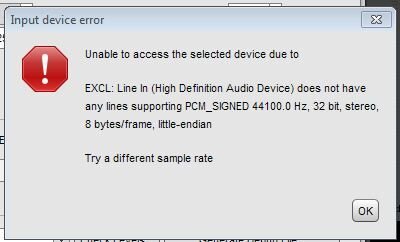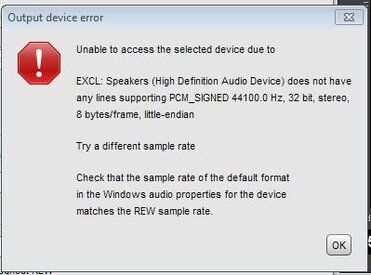Hi,
New member here, but not new to audio or electronics.
I would like to thank John Mulcahy for developing REW! It's a far cry from back in the late 70’s when I helped my dad tune a bass reflex with a Heathkit sine/square wave generator, a Heathkit VTVM and the July ‘68 Popular Electronics article “ Tune Up Your Bass Reflex” by David Weems.
I’m seeing a difference in the Fs as I measure a woofer, vs. REW’s impedance peak. Here are 5 different woofers (4 are the same model):
My measurement consists of a Wavetek generator with a 50 ohm output impedance, directly driving the woofer, with the DVM measuring the voltage. The generator has sufficient drive to provide 1.5 volts to the woofer.
I’ve verified the frequency with a Fluke DVM and a scope and also verified the waveform is not distorted.
For REW I’m using the Laptop’s internal sound card, stereo outputs and stereo inputs, all “effects” turned off. I’ve checked to see the sample rate is the same for input & output. Calibration went fine, my sense resistor is 105.1 ohms, my reference resistor is 23.1 ohms.
Am stuck – looking for reasons why I see the frequency shift. My readings are close to the published specs (20 - 25 Hz for the Seas, 25 +/- 5 Hz for the Stromberg Carlson).
I’m not concerned about actual impedance values at this point, only the frequencies.
Thanks, Charlie
New member here, but not new to audio or electronics.
I would like to thank John Mulcahy for developing REW! It's a far cry from back in the late 70’s when I helped my dad tune a bass reflex with a Heathkit sine/square wave generator, a Heathkit VTVM and the July ‘68 Popular Electronics article “ Tune Up Your Bass Reflex” by David Weems.
I’m seeing a difference in the Fs as I measure a woofer, vs. REW’s impedance peak. Here are 5 different woofers (4 are the same model):
| Woofer | My Measurement (Fs) | REW Impedance peak |
| Seas 25TV-EW (15 ohm) 10” #1 | 30 Hz | 34.9 Hz |
| Seas 25TV-EW (15 ohm) 10” #2 | 32 Hz | 36.0 Hz |
| Seas 25TV-EW (15 ohm) 10” #3 | 30 Hz | 36.3 Hz |
| Seas 25TV-EW (15 ohm) 10” #4 | 33 Hz | 37.8 Hz |
| Stromberg Carlson RW489 12” 16 ohm | 30 Hz | 33.4 Hz |
My measurement consists of a Wavetek generator with a 50 ohm output impedance, directly driving the woofer, with the DVM measuring the voltage. The generator has sufficient drive to provide 1.5 volts to the woofer.
I’ve verified the frequency with a Fluke DVM and a scope and also verified the waveform is not distorted.
For REW I’m using the Laptop’s internal sound card, stereo outputs and stereo inputs, all “effects” turned off. I’ve checked to see the sample rate is the same for input & output. Calibration went fine, my sense resistor is 105.1 ohms, my reference resistor is 23.1 ohms.
Am stuck – looking for reasons why I see the frequency shift. My readings are close to the published specs (20 - 25 Hz for the Seas, 25 +/- 5 Hz for the Stromberg Carlson).
I’m not concerned about actual impedance values at this point, only the frequencies.
Thanks, Charlie
















